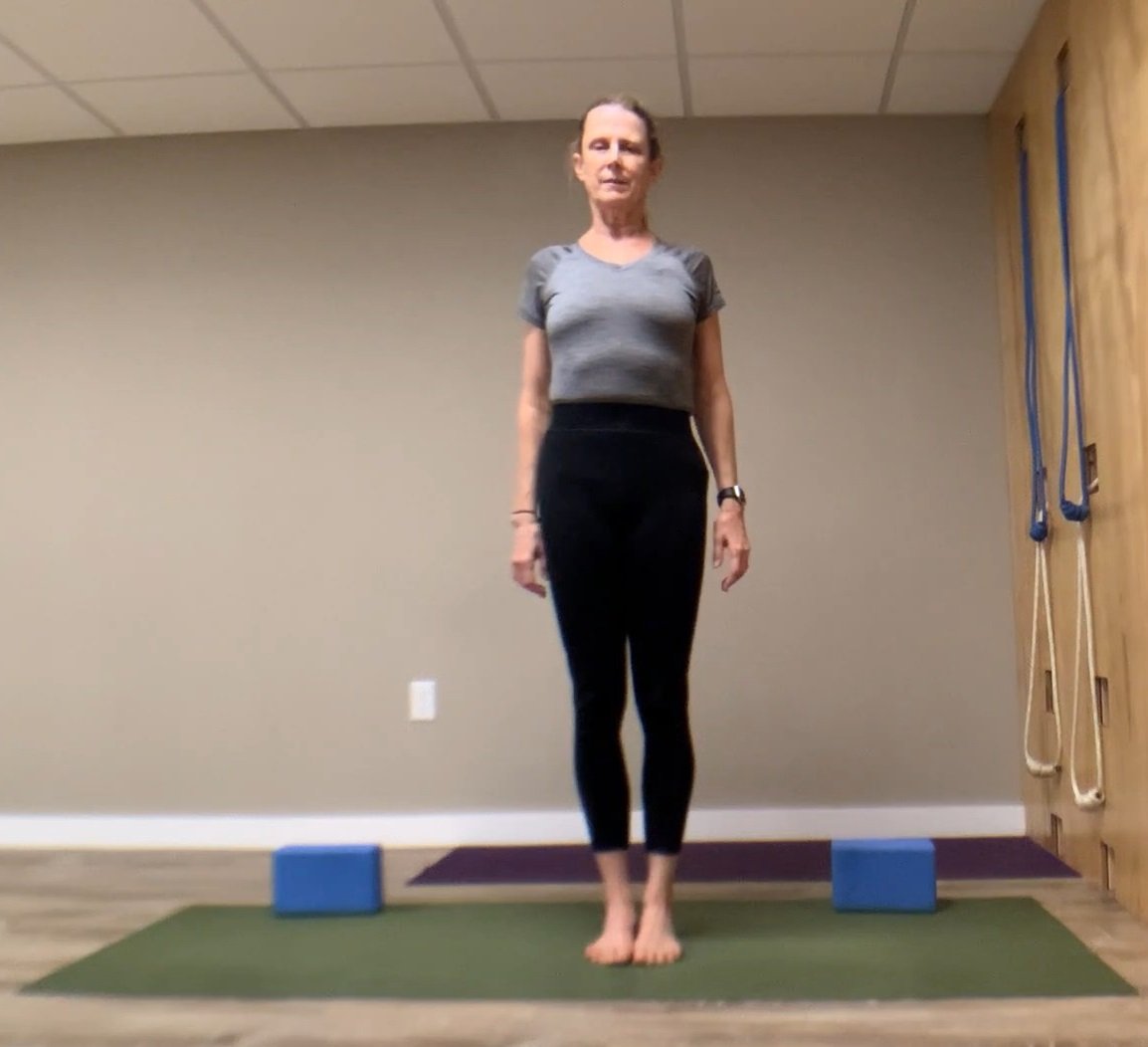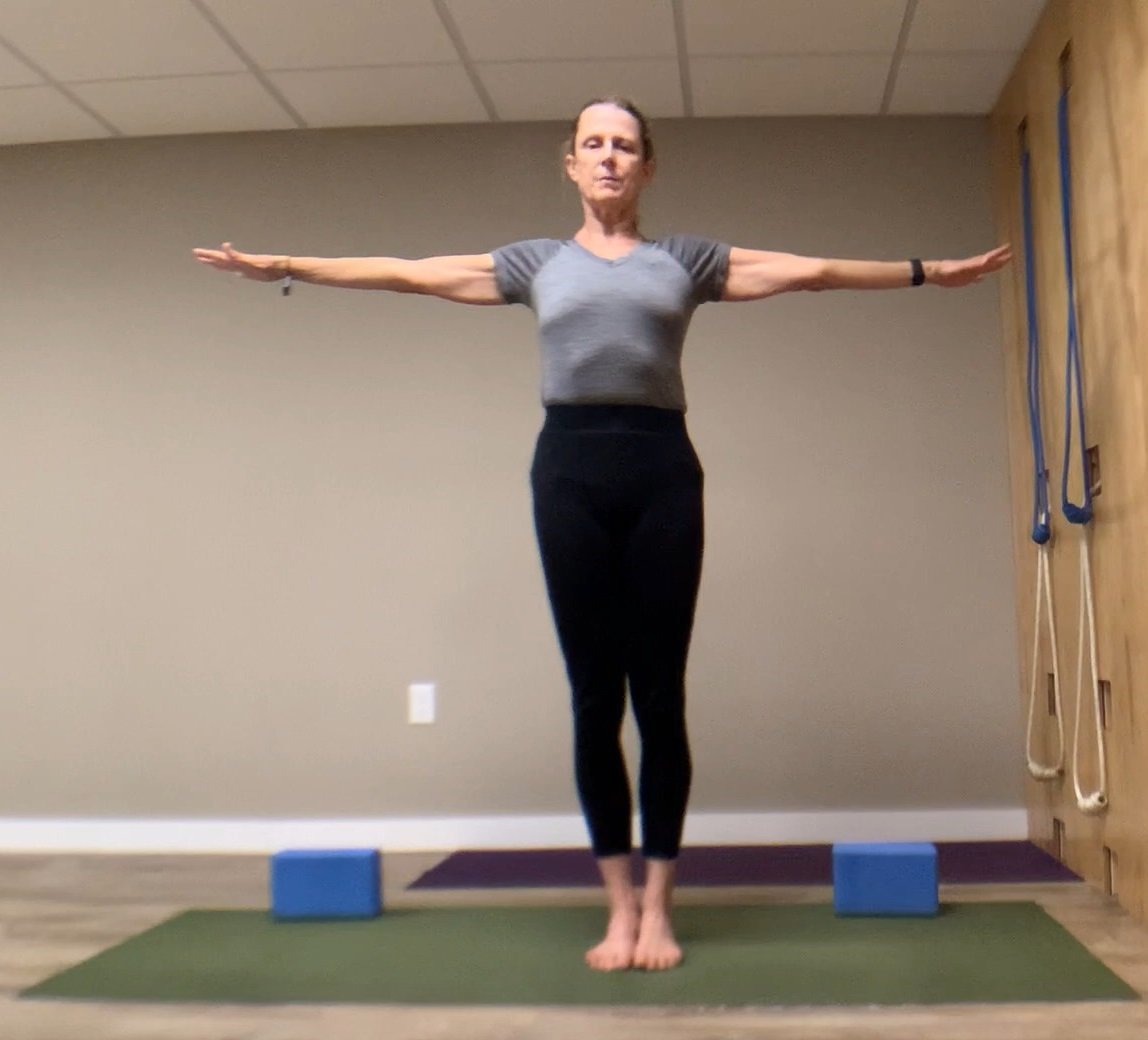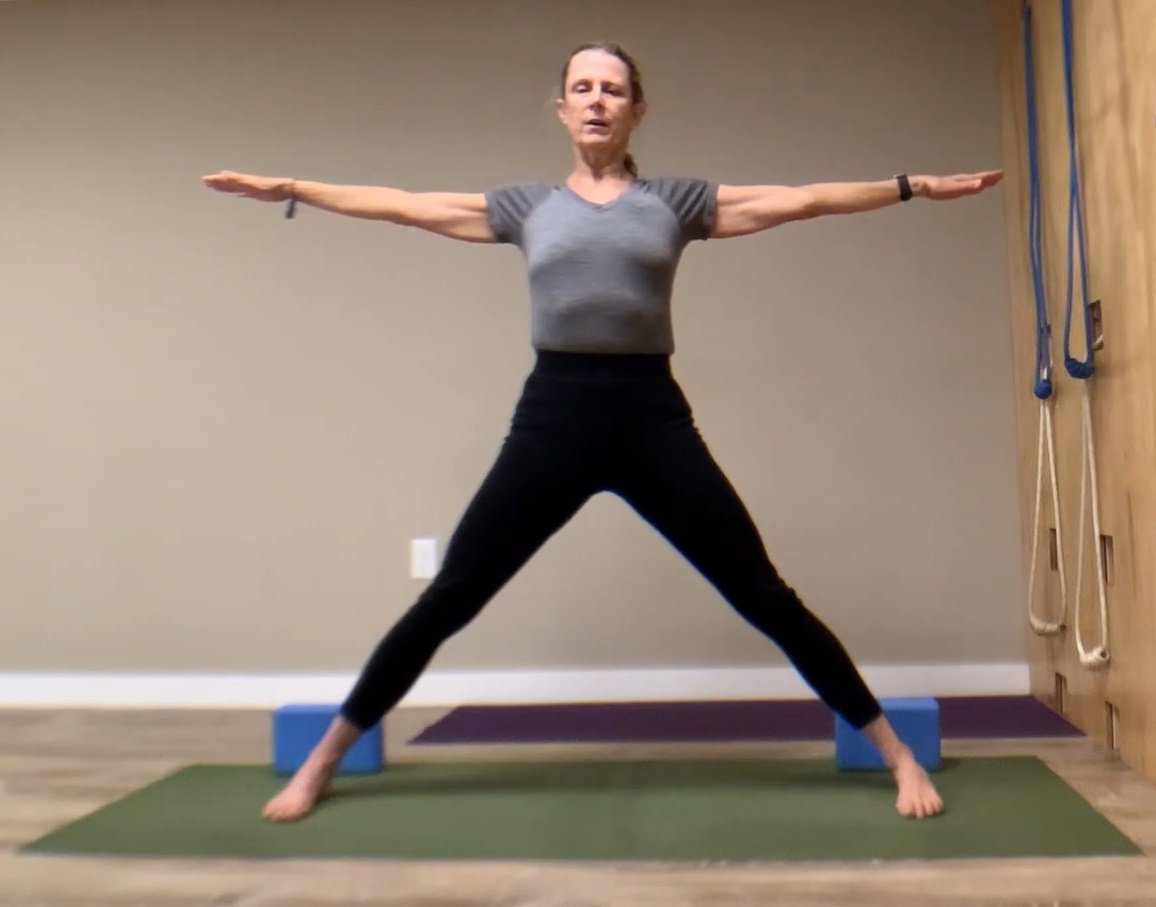Every pose is based on Tadasana. You’ve heard me say that before, but what does it mean?
Let’s take a look. Here is Tadasana.
I was recently teaching Utthita Trikonasana(Extended Triangle pose) and Parivrtta Trikonasana (Revolved Triangle Pose). I was trying to convey the openness of the chest in these poses, especially in Parivrtta Trikonasana.
(I made a video about this. You can find it here. It is in my On Demand Video Library.)
From Tadasana simply spread the arms wide apart. This is exactlywhat the upper body is doing in Utthita Trikonasana and Parivrtta Trikonasana.
Let’s start with Utthita Hasta Padasana (Wide Arms and Legs Pose). This pose is where all of the lateral standing poses start from. From Tadasana, jump or step the arms and legs wide apart and hold this position.
Can you see how active the legs are? The trunk is lifted and the collar bones are spreading. The arms are active; reaching out to the sides of the room and drawing back in at the same time.
Can you see this same shape in the trunk in Trikonasana, below?
The legs are slightly different because of the extension of the trunk out over the right leg, but the torso looks almost exactly the same. The sides of the trunk are long, especially the bottom side of the trunk. The arms are spread and the chest is open.
If the chest is not open in this pose, then you need some height under the bottom hand.
Now, let’s look at Parivrtta Trikonasana.
It is much more challenging to get the chest open in this twist, but that is the work. We are looking for that same opening in the chest that we had in Utthita Hasta Padasana, which is the same opening in the chest as in Tadasana.
As a side note, I don’t usually wear black leggings when I am teaching because it makes it hard for the students to see what the body is doing. Just notice the two Trikonasana pictures. There are context cues as to which one is Trikonasana and which one is the Parivrtta version. But, at first glance, the black leggings make it hard to tell which leg is forward. Can you see what I mean?
If this was helpful, let me know in the comments below. Also, if there is something else that you would like to see explained, write it in the comments below and I will try to answer it in a future blog post.





